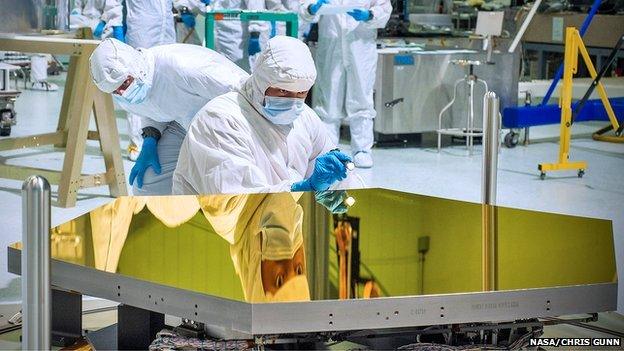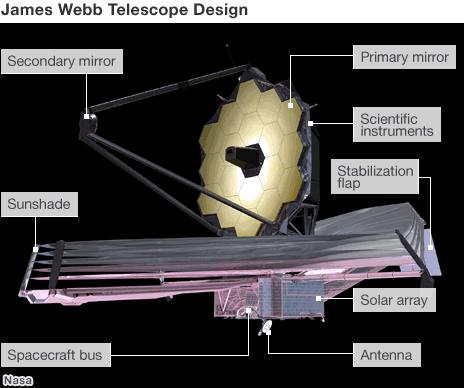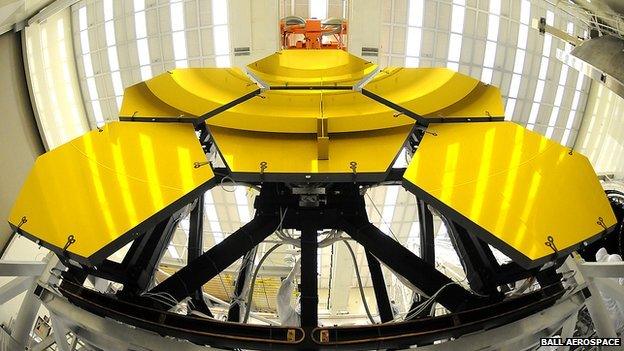First James Webb telescope mirrors delivered to Nasa
- Published

The mirrors will be checked out and then stored for assembly on the telescope
The first two components of the huge mirror set to fly on the US James Webb Space Telescope (JWST) have been delivered to Nasa.
James Webb - regarded as the successor to Hubble - is due to launch in 2018.
After they have been checked, the hexagonal mirror components will be stored until engineers are ready to assemble them onto the telescope.
Some 18 of them will make up JWST's 6.5m primary mirror, which is more than twice as wide as Hubble's main mirror.
On 17 September, the mirrors left the facility of contractor Ball Aerospace in Boulder, Colorado, for Nasa's Goddard Space Flight Center in Maryland, where the telescope is being assembled.

The mirror components have undergone cryogenic testing at Nasa's facilities
"These first two completed flight mirror assemblies arriving at Goddard are an important first step leading towards the integration of the mirrors onto the flight structure," said Lee Feinberg, the optical telescope element manager for JWST.
The remaining 16 mirror "assemblies" will make their way from Boulder to Nasa Goddard over the next 12 months as they await integration into the infrared telescope in 2015.
Each mirror component measures more than 1.3m across and weighs some 40kg.
JWST is the first civilian space observatory to use an actively controlled, segmented mirror.
It will also carry a shield the size of a tennis court to guard its sensitive vision from the heat and intense glare of the Sun.
James Webb is expected to be the premier space observatory of the next decade and will study every phase in the history of our Universe, ranging from the first luminous glows after the Big Bang, to the formation of star systems capable of supporting life on planets like Earth.
In order to, for example, look back through time to observe young galaxies, JWST needs a large mirror to see such faint objects.
A telescope's sensitivity, or how much detail it can see, is directly related to the size of the mirror area that collects light from the objects being observed - with larger mirrors collecting more light than smaller ones.
Recommended 16 years ago as the logical evolution beyond Hubble, the JWST has managed to garner a fair amount of controversy.

James Webb's main mirror has around seven times more collecting area than Hubble's 2.4m primary mirror
The sunshield is about 22m by 12m. There will be a 300-degree difference in temperature between the two sides
James Webb's instruments must be very cold to ensure their own infrared glow does not swamp the observations
The mission will launch in 2018 on an Ariane rocket. The observing position will be 1.5 million km from Earth
Technical difficulties and project mismanagement mean the observatory is now running years behind schedule and is billions of dollars over-budget.
Elements of the US Congress wanted to cancel the telescope in summer 2011. That did not happen, but Capitol Hill now has James Webb on a very short leash, with Nasa required to provide monthly updates on milestones met or missed.
The current estimate for the US side of the mission is $8.8bn, which covers the full life cycle of the project from its inception to the end of initial operations.
Extra to that bill is some $650m for the European contributions like the Mid-Infrared Instrument (Miri) - which will help confirm the identity of the first luminous objects in the cosmos - and the Ariane rocket that will launch the observatory in October 2018.

- Published9 May 2012
- Published23 August 2011